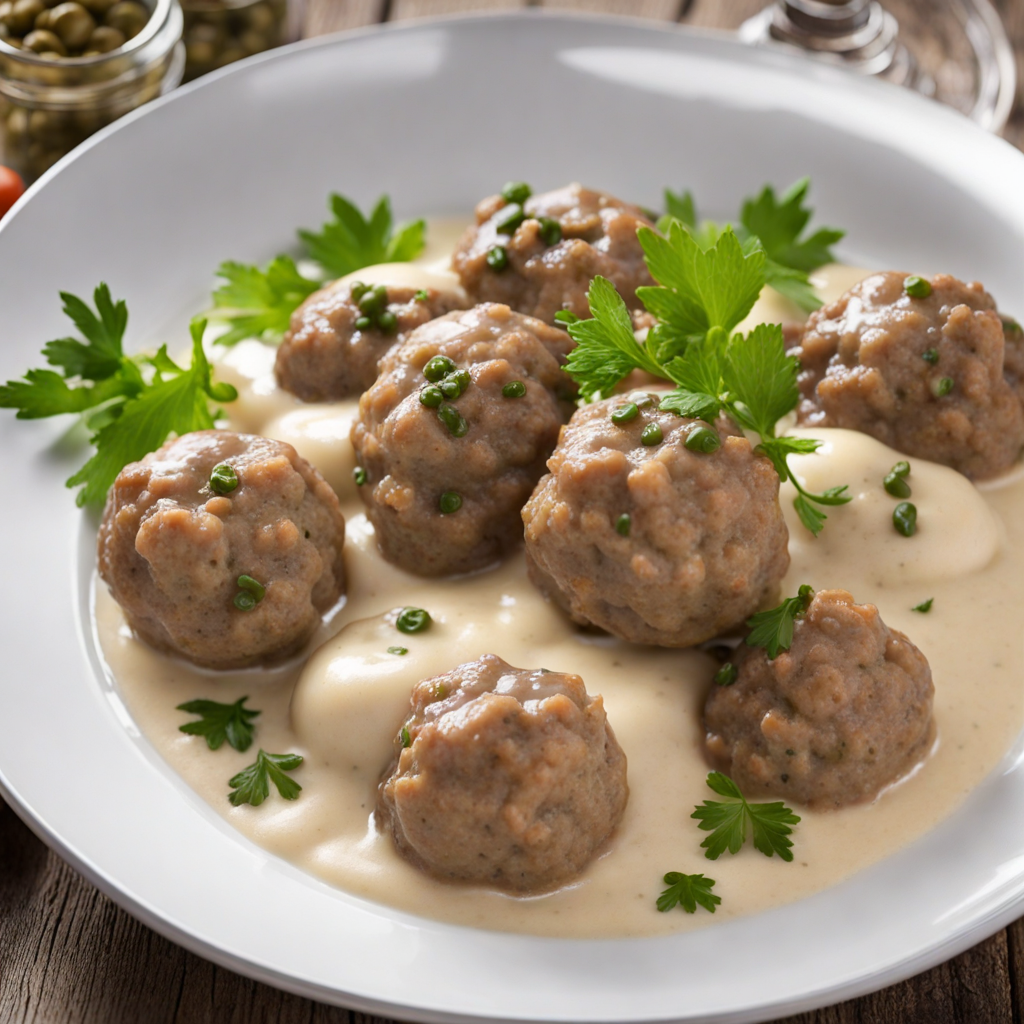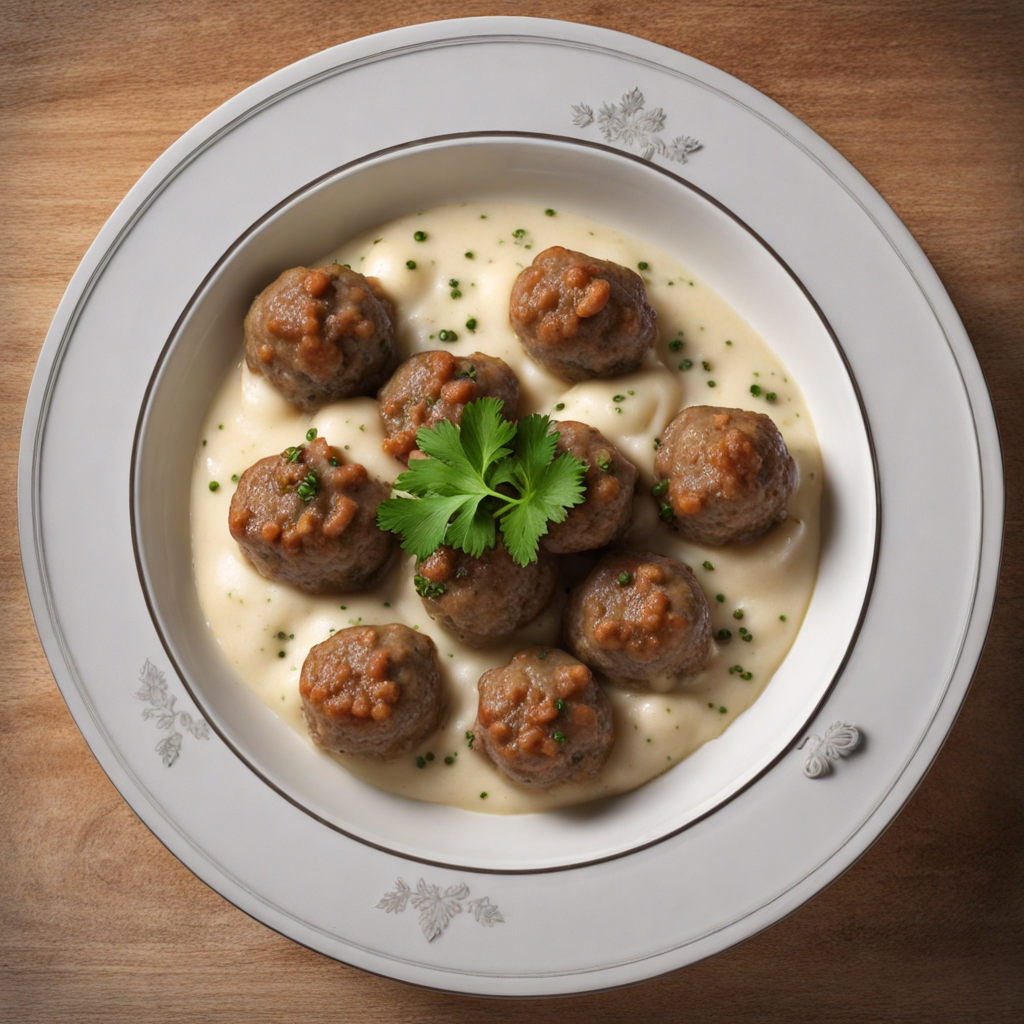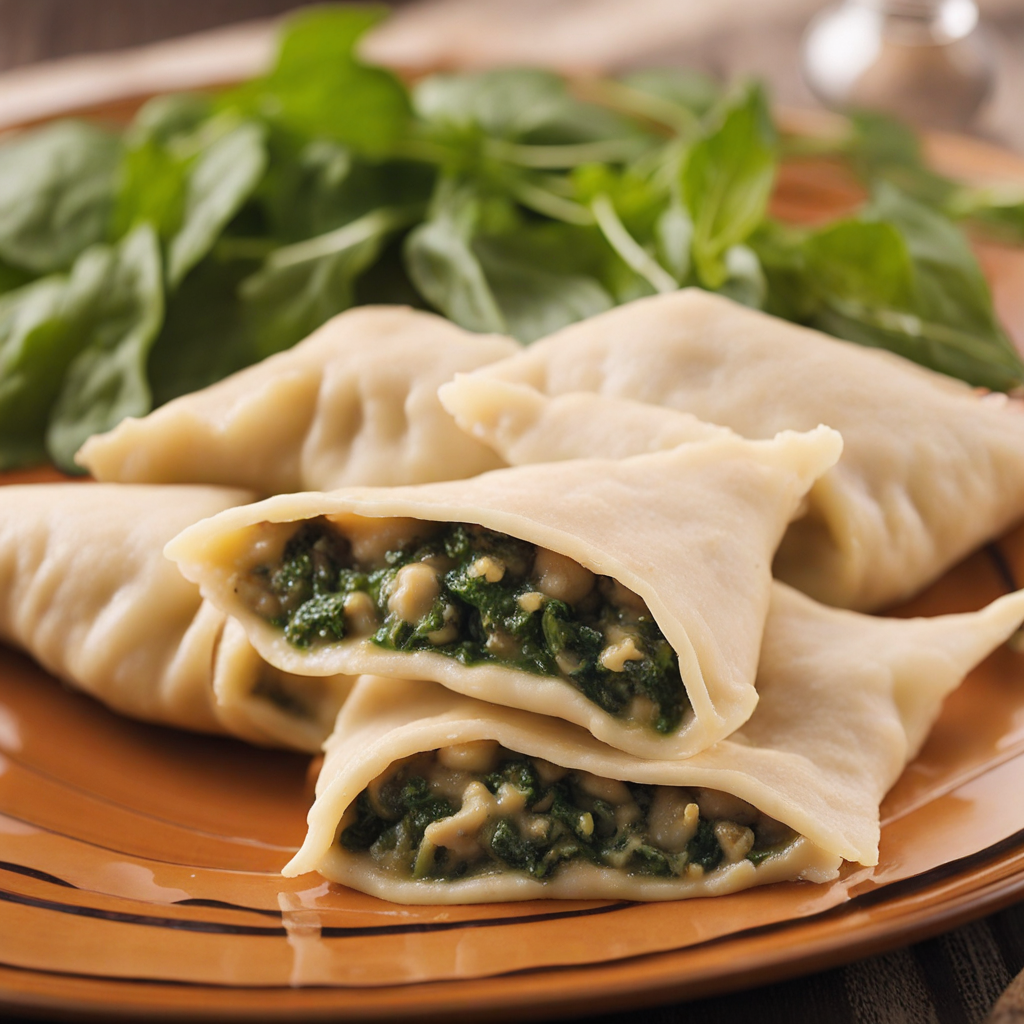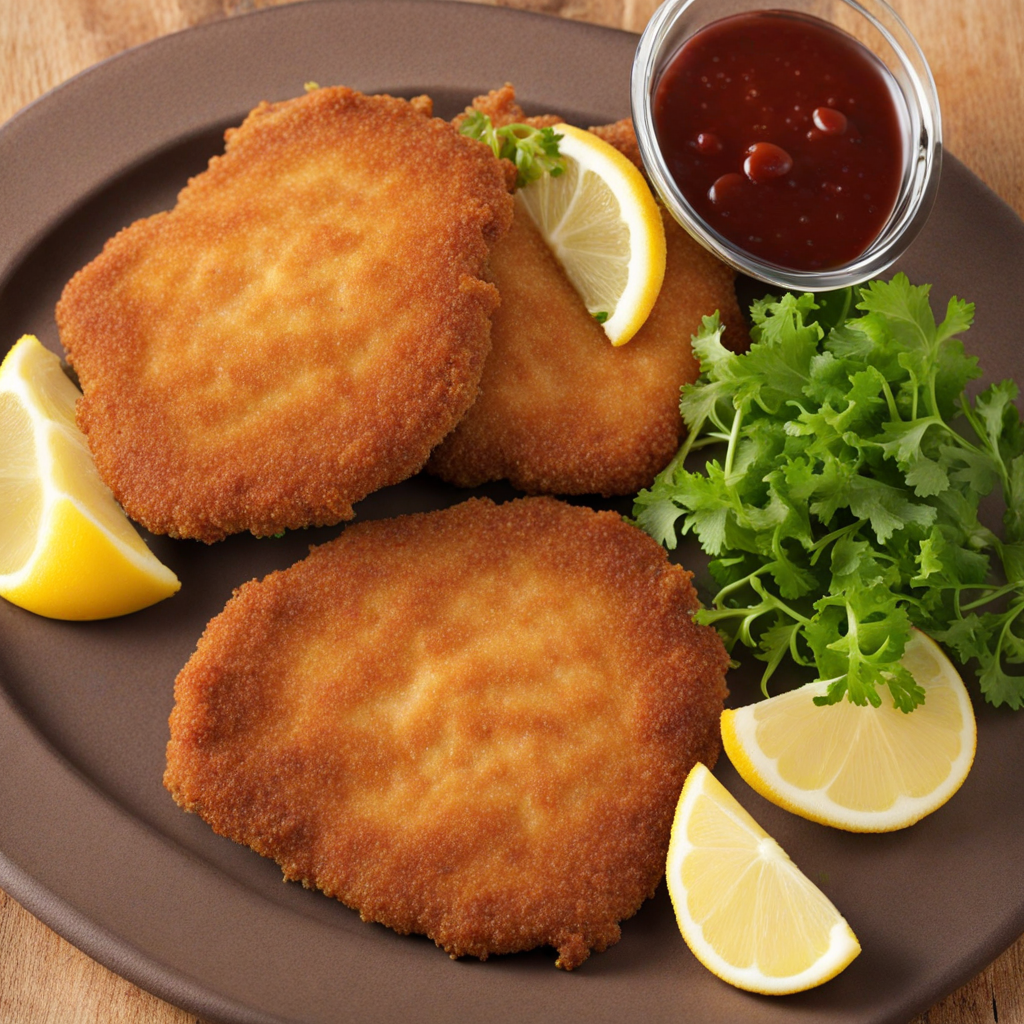Königsberger Klopse
Königsberger Klopse, a traditional dish hailing from the coastal city of Königsberg (now Kaliningrad, Russia), is a delightful representation of German comfort food. At its core, this dish features tender meatballs made from a mixture of ground beef and pork, which are seasoned with a variety of spices, including nutmeg, salt, and pepper. The meatballs are traditionally bound with bread soaked in milk, which adds a lovely moistness and texture to each bite. Cooked gently in a flavorful broth, they absorb the aromatic essence of the ingredients, resulting in a dish that is both hearty and satisfying. The accompanying sauce is what truly sets Königsberger Klopse apart. It is a creamy, white sauce enriched with capers, which lends a delightful tanginess that beautifully balances the rich flavors of the meatballs. The sauce is typically thickened with a roux and finished with a splash of lemon juice for brightness, creating a harmonious blend of flavors. The capers not only add a burst of flavor but also a textural contrast, enhancing the overall experience of the dish. Served alongside boiled potatoes or rice, Königsberger Klopse is a dish that invites you to savor each mouthful. The combination of the tender meatballs, the creamy caper sauce, and the comforting sides makes for a truly indulgent meal. As you dig into this classic German dish, you’ll discover a unique taste that reflects the rich culinary heritage of the region, making it a wonderful choice for anyone seeking to explore new flavors in their dining adventures.
How It Became This Dish
The Culinary Journey of Königsberger Klopse Introduction Königsberger Klopse, a dish synonymous with the historical region of East Prussia, encapsulates the rich tapestry of German culinary heritage. These meatballs, typically made from minced meat, onions, and spices, are served in a creamy white sauce with capers, offering a unique flavor profile that reflects the region's cultural intersections. The dish not only delights the palate but also tells the story of its origins, cultural significance, and evolution over time. Origins of Königsberger Klopse The roots of Königsberger Klopse can be traced back to the 18th century in the city of Königsberg (now Kaliningrad, Russia). The dish is believed to have been created during the time when Prussia was a significant European power, encompassing parts of modern-day Germany, Poland, and Lithuania. The name "Königsberger" directly refers to the city of Königsberg, while "Klopse" translates to "dumplings" or "meatballs." The culinary landscape of Königsberg was highly influenced by its diverse population, including Germans, Poles, Lithuanians, and Jews, creating a melting pot of flavors and cooking techniques. The use of minced meat in forming meatballs is a common practice seen across various cultures, but it was the local adaptation that gave rise to the distinctive dish we know today. Königsberger Klopse is thought to have been inspired by the Jewish dish "gefilte fish," which also involves the concept of stuffing or forming a mixture into balls. The use of capers in the sauce, which adds a briny flavor, reflects the Baltic Sea’s influence on the region's cuisine. The dish's incorporation of sour cream or a white sauce with lemon juice adds a touch of acidity, balancing the richness of the meatballs. Cultural Significance Königsberger Klopse is more than just a meal; it is a cultural artifact that embodies the history and identity of East Prussia. The dish became a staple in the local diet, often served at festive occasions and family gatherings. It reflected the availability of local ingredients, such as beef or pork, and the region's access to the sea, which provided fresh fish and capers. As East Prussia went through significant political changes, especially post-World War II, the cultural significance of Königsberger Klopse became intertwined with the identity of the displaced Prussians. Many Germans who were expelled from East Prussia took with them their culinary traditions, ensuring that Königsberger Klopse remained a beloved dish within German households, especially among those with roots in the region. The meatballs became a symbol of nostalgia and resilience, reminding generations of their heritage. Development Over Time The evolution of Königsberger Klopse reflects broader culinary trends and societal changes in Germany. In the early 20th century, the dish was popularized beyond East Prussia, gaining recognition in other parts of Germany. Cookbooks began to feature recipes for Königsberger Klopse, further solidifying its place in the national culinary repertoire. As Germany underwent modernization after World War II, the preparation of Königsberger Klopse adapted to the changing lifestyles of its people. While traditional recipes often called for a labor-intensive approach, incorporating ingredients like breadcrumbs and eggs to bind the meat, modern adaptations have simplified the process. Today, many cooks opt for convenience, using pre-packaged ingredients or shortcuts without compromising the integrity of the dish. Moreover, the globalization of food culture has facilitated the exploration of Königsberger Klopse beyond German borders. With migration patterns leading to the establishment of German communities worldwide, the dish has found its way into international menus, allowing people from diverse backgrounds to experience its unique flavors. Contemporary Interpretations In recent years, Königsberger Klopse has seen a revival as chefs and home cooks embrace traditional recipes while experimenting with contemporary twists. Some variations incorporate different types of meat, such as turkey or chicken, catering to modern dietary preferences. Vegetarian adaptations have also emerged, utilizing ingredients like lentils or chickpeas to create meatball alternatives that maintain the essence of the original dish. Restaurants and eateries in Germany now often serve Königsberger Klopse as a tribute to their Prussian heritage, garnished with fresh herbs and accompanied by traditional sides like boiled potatoes or bread. The dish is also featured in festive meals, particularly around holidays, serving as a reminder of the past while adapting to present tastes. Conclusion Königsberger Klopse stands as a testament to the enduring legacy of East Prussian cuisine and its ability to adapt through history. From its origins in the 18th century to its modern interpretations, this dish encapsulates the cultural significance and culinary evolution of a region marked by diversity and change. As the world becomes increasingly interconnected, foods like Königsberger Klopse bridge the gap between past and present, offering a taste of history while remaining relevant in contemporary kitchens. The meatballs, with their distinctive flavor and heartwarming appeal, continue to resonate with those who cherish their traditions, making Königsberger Klopse a true staple in the pantheon of German cuisine.
You may like
Discover local flavors from Germany







